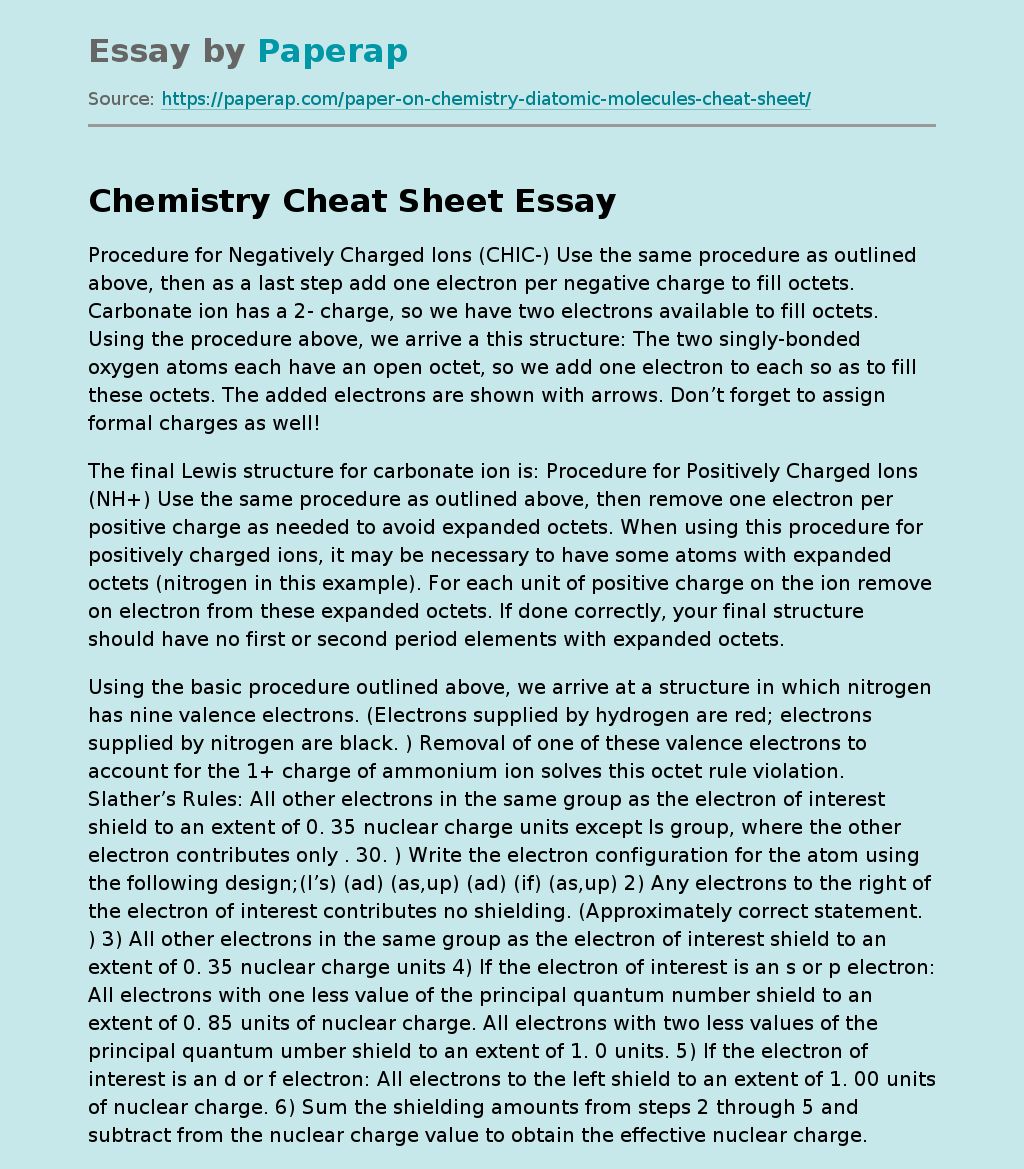Procedure for Negatively Charged Ions (CHIC-) Use the same procedure as outlined above, then as a last step add one electron per negative charge to fill octets. Carbonate ion has a 2- charge, so we have two electrons available to fill octets. Using the procedure above, we arrive a this structure: The two singly-bonded oxygen atoms each have an open octet, so we add one electron to each so as to fill these octets. The added electrons are shown with arrows.
Don’t forget to assign formal charges as well!
The final Lewis structure for carbonate ion is: Procedure for Positively Charged Ions (NH+) Use the same procedure as outlined above, then remove one electron per positive charge as needed to avoid expanded octets. When using this procedure for positively charged ions, it may be necessary to have some atoms with expanded octets (nitrogen in this example). For each unit of positive charge on the ion remove on electron from these expanded octets.
If done correctly, your final structure should have no first or second period elements with expanded octets.
Using the basic procedure outlined above, we arrive at a structure in which nitrogen has nine valence electrons. (Electrons supplied by hydrogen are red; electrons supplied by nitrogen are black. ) Removal of one of these valence electrons to account for the 1+ charge of ammonium ion solves this octet rule violation. Slather’s Rules: All other electrons in the same group as the electron of interest shield to an extent of 0. 35 nuclear charge units except Is group, where the other electron contributes only .
30. ) Write the electron configuration for the atom using the following design;(l’s) (ad) (as,up) (ad) (if) (as,up) 2) Any electrons to the right of the electron of interest contributes no shielding. (Approximately correct statement. ) 3) All other electrons in the same group as the electron of interest shield to an extent of 0. 35 nuclear charge units 4) If the electron of interest is an s or p electron: All electrons with one less value of the principal quantum number shield to an extent of 0. 85 units of nuclear charge. All electrons with two less values of the principal quantum umber shield to an extent of 1. 0 units. 5) If the electron of interest is an d or f electron: All electrons to the left shield to an extent of 1. 00 units of nuclear charge. 6) Sum the shielding amounts from steps 2 through 5 and subtract from the nuclear charge value to obtain the effective nuclear charge. Examples: Calculate Z* for a valence electron in fluorine. Rule 2 does not apply; 0. 35 6+0. 85 2 = 3. 8 Z* = 9 – 3. 8 = 5. 2 for a valence electron. Calculate Z* for a as electron in Platinum. (1 (Dodd) (ass,app) (Dodd) (puff) (zaps) (add) (ass) Rule 2 does
Nitrogen Expanded Octet
Chemistry Cheat Sheet. (2019, Dec 05). Retrieved from https://paperap.com/paper-on-chemistry-diatomic-molecules-cheat-sheet/

